10 Types of Cameras (With Pictures)
Last Updated on
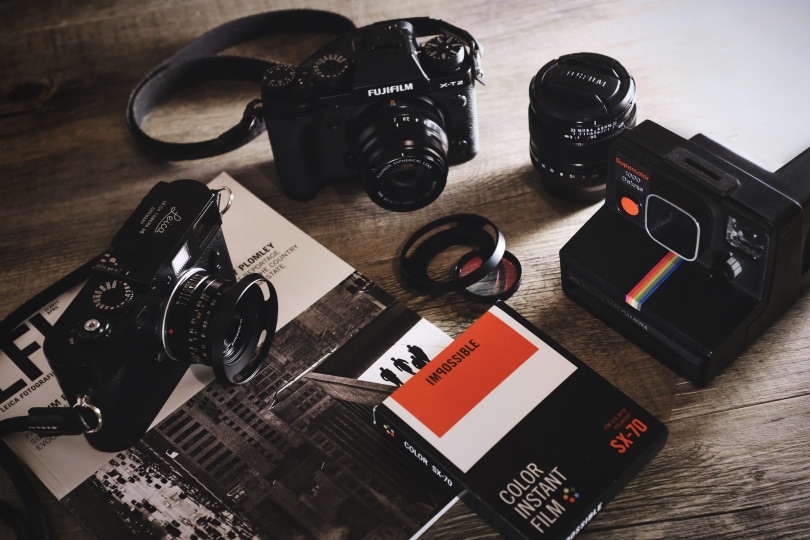
Back in the day, cameras used to be the sole domain of tourists and professionals. Today, there are more affordable camera options.
While that’s a great thing for the average person, it can be a little overwhelming when trying to figure out what’s out there and what you might need.
One of the best things to do is to familiarize yourself with the different types of cameras out there. They all have their own perks and drawbacks, so there’s no single right choice for everyone!

The 10 Types of Cameras
1. DSLR

| Cost | High |
| Size | Bulky |
| Quality | High |
DSLR cameras are among the most popular choices on the market today, and it’s not hard to see why. They’re extremely easy for beginners to use with their automatic settings, but if you know what you’re doing, you can dive into the settings and set up whatever you want.
Additionally, you can easily change and upgrade lenses, which opens a wide array of possibilities for your photographs. These often come with both optical and digital viewfinders too.
While DSLRs are more expensive than bridge and compact cameras, they deliver higher-quality results, and the price of these cameras keeps dropping.
The most notable drawback to DSLR cameras is their size. They are bulky and cumbersome to carry around. But if you want top-notch professional-quality photos, a DSLR is an outstanding choice.
- Can change out the lenses
- Customizable
- Control all the settings
- Easy to use
- Options for optical and digital viewfinders
- Expensive
- Heavy and bulky
2. Mirrorless
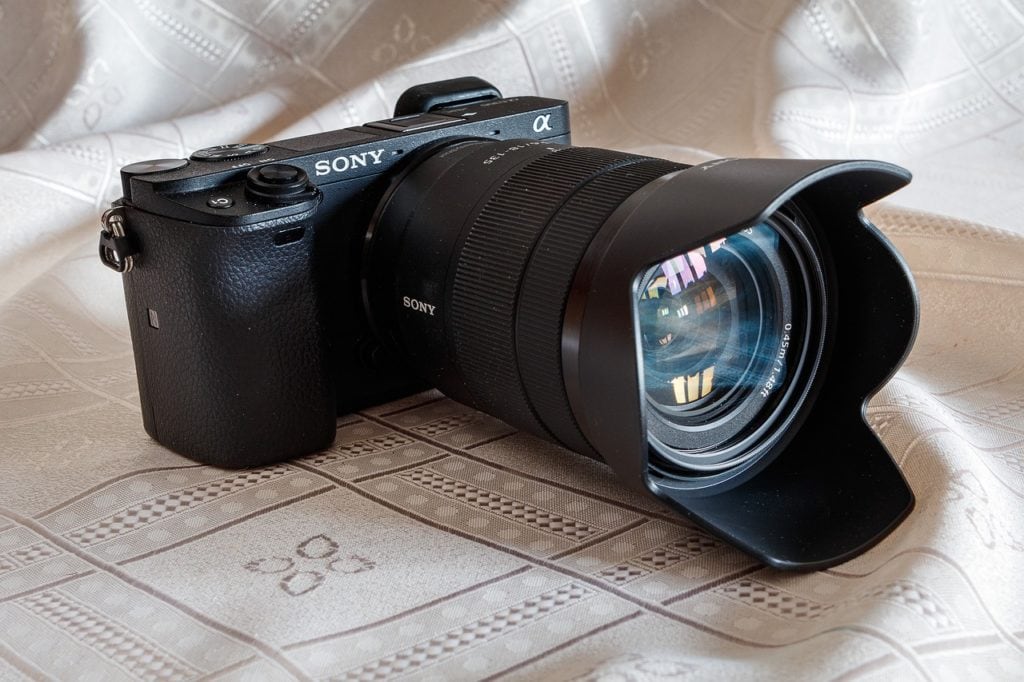
| Cost | Very high |
| Size | Bulky |
| Quality | Very high |
Mirrorless cameras are a step up from DSLR cameras in many ways. It might be hard to tell the difference between the two from their exterior physical appearance, but when you look at what’s going on behind the lens, they’re entirely different.
Mirrorless cameras shoot straight back to the sensor, while DSLR cameras reflect light through a mirror before it gets to the sensor. Due to this change in design, they can be a bit smaller than DSLRs, but they still have a bit of bulk to them.
They produce high-quality images, and they’re an outstanding choice for taking pictures of moving subjects. Additionally, they often double as HD video cameras, and there’s a whole host of customization options that you can make use of.
They do tend to have a short battery life, though, and they don’t have an optical viewfinder. Finally, they are expensive, even compared to DSLR cameras.
- Very high-quality images
- Control all settings
- Customizable
- Almost always includes HD video recording
- Lightweight and compact compared to DSLRs
- Expensive
- No optical viewfinder
- Short battery life
3. Compact
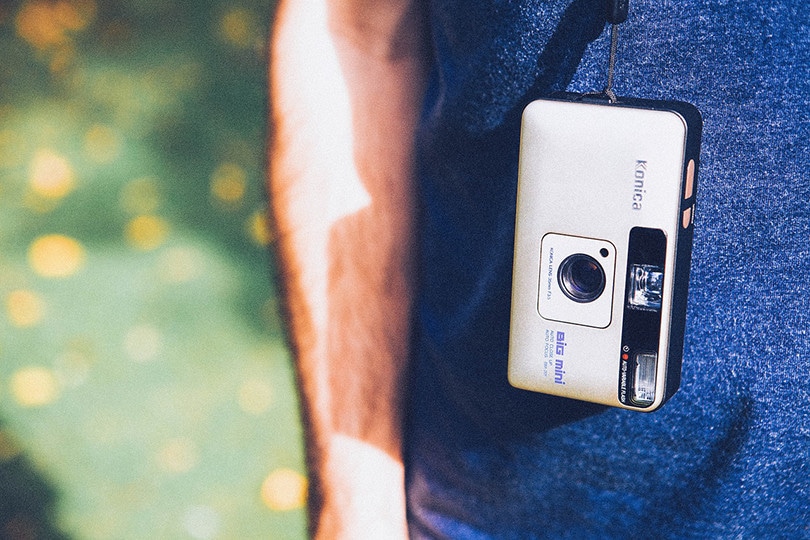
| Cost | Low |
| Size | Compact |
| Quality | Low |
If you’re an amateur photographer looking for something that’s an upgrade over your smartphone, compact cameras are ideal options. They are extremely user friendly and are often referred to as point-and-shoot cameras because of how simple they are to use.
Compact cameras are quite affordable, and as the name implies, they’re small in size and easy to take from place to place.
But while they take high-quality photos and give you more options than a smartphone camera, they don’t deliver the highest-quality images compared to DSLR or mirrorless cameras.
They also typically only have a digital viewfinder, and they often don’t have an optical zoom, only a digital one. Still, with a low entry price, a compact camera is a great upgrade over a smartphone.
- User friendly
- Affordable
- Compact and easy to transport
- Often has zoom lenses
- Not that customizable
- Low-quality results compared to DSLRs and mirrorless cameras
4. Bridge
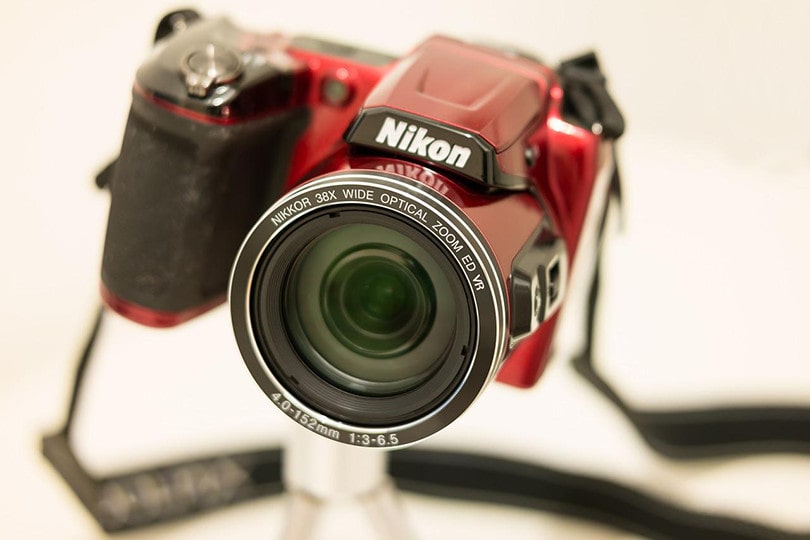
| Cost | Medium |
| Size | Compact |
| Quality | Medium |
A bridge camera is the in-between for a DSLR and a compact camera. While it looks like a DSLR, it performs much closer to a compact.
For one thing, you can’t swap out the lens, although a bridge camera typically does offer optical zoom capabilities and has a large lens. It also has a few more customization options than you would get with a compact, but you can’t adjust all the settings like you can with a DSLR.
The reason that so many people go with a bridge camera is the price and ease of use. It’s just as easy to use as a compact camera, and it’s not nearly as expensive as a DSLR.
It’s a great in-between option if you’re not ready for a DSLR and don’t like the quality of a traditional compact.
- Lightweight and easy to use
- Affordable
- Higher quality than most compact cameras
- Versatile lens
- Can’t change out the lens
- Lower quality than DSLR or mirrorless cameras
5. Smartphone

| Cost | Low |
| Size | Small |
| Quality | Low |
If you live in the United States, chances are that you have a smartphone, and one of the top features that a smartphone has is a camera. Smartphone cameras are extremely convenient because they’re attached to a device that sits right in your pocket, and you can upload and share your photos with the click of a button.
They also often enable you to incorporate fun features and filters into your photos, but they don’t offer many traditional photography settings and adjustments. Still, they’re easy to use and you probably already have one!
However, they don’t have the highest image quality, they don’t have an optical zoom, and they typically have limited functions and controls.
- Likely already have one
- Easy to use
- Extremely convenient
- Limited functions and control
- Limited zoom capabilities
- Low image quality
6. Film

| Cost | Low |
| Size | Bulky |
| Quality | High |
When we’re talking about film cameras, we’re not talking about the kind that you record videos with. Before the digital photography resolution, film cameras were the only options that people had. You can still get a new film camera today, even if they are a bit hard to track down.
Film cameras are now relatively affordable up front, but you need to factor in the price of the film when you’re trying to figure out which option is more cost-effective in the long run.
Moreover, film cameras typically don’t have many automatic features, which means they’re not that beginner friendly. But if you’re looking to master the basics of photography, film cameras might push you into a better understanding.
The tradeoff with all this is that you won’t get to see any of your results right away. You’ll need to take your film somewhere to develop it, and you won’t know if you got the perfect picture until you get them back.
These cameras do take incredibly high-quality photos, and it wasn’t until recently that digital cameras could even match their quality.
- Affordable up front
- High-quality images
- Easy to upgrade the lens
- Enables you to master photography basics
- Hard to use
- Must get the pictures developed later
- Must keep purchasing film
- No way to see your images as you take them
7. Instant/Polaroids

| Cost | High |
| Size | Bulky |
| Quality | Low |
Instant cameras, often referred to as Polaroids, are simply a fun way for you to take pictures on the go and get an instant printout. You take a picture, and it immediately spits out an image on a small sheet for you to have.
They’re extremely easy and fun to use, and they give you a physical photo in a matter of seconds (though it might take a minute for you to actually see the image on the sheet!).
Instant cameras are compact considering that they print images too, but compared to compact cameras and even many DSLRs, they’re on the bulkier side of things. Furthermore, you can’t change any settings. They’re point-and-shoot cameras, but you do get your image right away.
Finally, they don’t give the highest quality images. These are fun to use, but they’re not going to give you professional-quality or even smartphone-quality results.
- Instant images
- Easy to use
- Fun to use
- Expensive, up front and long term
- Limited controls
- Bulky camera
- Low-quality photos
8. Action

| Cost | High |
| Size | Compact |
| Quality | Medium |
Action cameras are perfect for individuals constantly on the go who want to capture some of what they’re seeing. Go-Pro is probably the most well-known brand that produces action cameras, and these can give you a good idea of what to expect.
These cameras almost always can take videos, and they’re super lightweight and portable. Furthermore, you don’t have to worry about having them out in inclement weather, and they’re among the most durable camera options out there.
Action cameras do have drawbacks, though. The first issue is that they almost always have limited controls and upgrade options. You get what you get, and there’s not much that you can change after the fact.
Moreover, the battery life is often shorter than with a typical camera, which is a big deal if you don’t have a backup on hand or a way to charge it. The final issue is the price. Action cameras tend to cost a bit more than many other camera options.
- Great for videos
- Lightweight and portable
- Weather resistant
- Durable
- Expensive
- Limited controls
- Short battery life
- Limited upgrades
9. 360-Degree
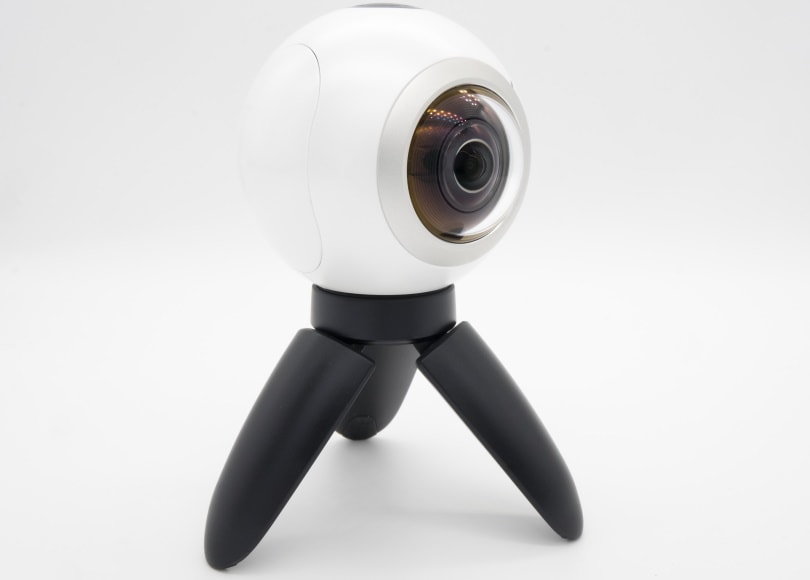
| Cost | High |
| Size | Compact |
| Quality | Low |
Have you ever seen a digital image that you can move around and see everything in the area? If so, you’ve seen the results of a 360-degree camera. It’s a great way to view a physical environment in a digital world.
A great example of a 360-degree-camera image is Google’s Street View option on Google Maps. These cameras are easy to mount to things, and they do a great job of capturing in-depth panoramic images.
However, while it’s a cool way to image an area, there are a few drawbacks. First, these cameras don’t usually give the highest-quality images. Second, they are expensive. Finally, no matter what you do, you can’t print the images.
Still, if you want to capture an entire scene and let others view it digitally, there’s no better way to do that than with a 360-degree camera.
- Easy to transport
- Unique way to capture an area
- Outstanding choice for panoramic images
- Easy to mount
- Low-quality images
- Expensive
- Can’t print images
10. Medium Format
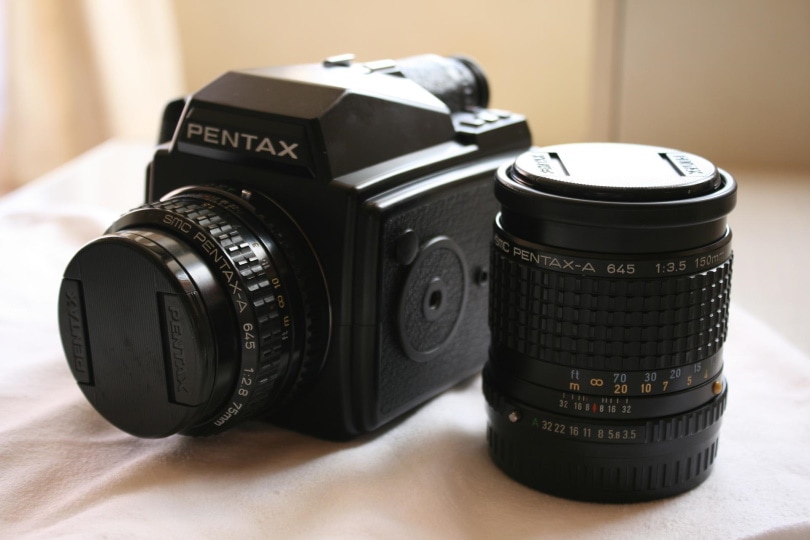
| Cost | High |
| Size | Bulky |
| Quality | High |
Unless you’re really into the photography world, there’s a good chance that you’ve never seen a medium-format camera. They’re very much a niche camera, so the price for one is astronomically high.
They essentially mimic 120mm film cameras but put everything into a digital format. They use a large 120mm sensor instead of film, and this offers a ton of perks. They are customizable and versatile and can capture images of just about anything.
Therefore, they’re a favorite of professional photographers. The tradeoff is that since they are niche, there’s not an overabundance of accessories. Furthermore, medium-format camera manufacturers know that their target audience is professional photographers, so they don’t make them as user friendly.
Since they need a large sensor, these cameras tend to be among the bulkiest options out there. But after you see what these cameras can do and the quality of the results, you’ll understand why professionals want them.
- High-quality images
- Versatile
- Highly customizable
- Dynamic range
- Expensive
- Few camera and accessory options
- Bulky and heavy
- Not that easy to use

In Conclusion
No matter what you need, there’s bound to be a camera option for you out there. Just do your homework, know what you need, and go from there. There’s no wrong choice, so take your time and dive into the world of photography!
Once you have a better understanding of what’s out there and what you need, go get a camera and start taking pictures!
Featured Image Credit: Piqsels
About the Author Robert Sparks
Robert’s obsession with all things optical started early in life, when his optician father would bring home prototypes for Robert to play with. Nowadays, Robert is dedicated to helping others find the right optics for their needs. His hobbies include astronomy, astrophysics, and model building. Originally from Newark, NJ, he resides in Santa Fe, New Mexico, where the nighttime skies are filled with glittering stars.
Related Articles:
Monocular vs Telescope: Differences Explained (With Pictures)
How to Clean a Refractor Telescope: Step-by-Step Guide
How to Clean a Telescope Eyepiece: Step-by-Step Guide
How to Clean a Rifle Scope: 8 Expert Tips
What Is a Monocular Used For? 8 Common Functions
How to Clean a Telescope Mirror: 8 Expert Tips
Brightfield vs Phase Contrast Microscopy: The Differences Explained
SkyCamHD Drone Review: Pros, Cons, FAQ, & Verdict
